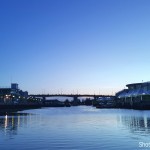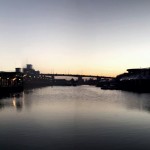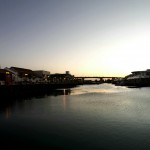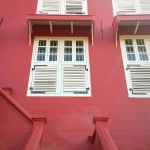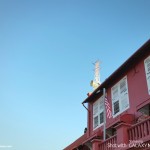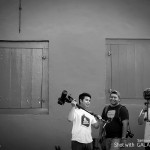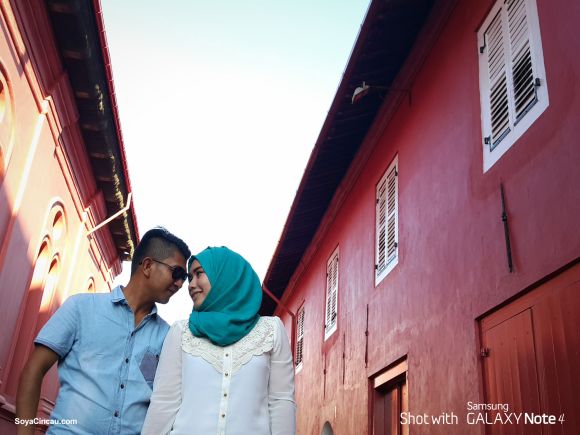
This post is paid for by Samsung Mobile Malaysia and the Galaxy Note 4. Do you Note?
On paper, the Galaxy Note 4 has a 16MP rear camera with a fast f/2.4 lens, optical image stabiliser and one of the fastest auto focus systems in the industry.
But what does that mean to you? Is the camera on the Galaxy Note 4 any good?
To find out, we gave the Galaxy Note 4 to a professional photographer and told him to take the best pictures he possibly can with the device without using third-party apps and without the benefit of post-editing using a desktop computer.
The photographer took the challenge and the results are pretty darn amazing.
About the photographer
 Rudy Azwan is the founder and director at wedding photography boutique, Sweetpictures – a prominent brand in professional wedding photography. He has over 10 years with a unique perspective on the world around him.
Rudy Azwan is the founder and director at wedding photography boutique, Sweetpictures – a prominent brand in professional wedding photography. He has over 10 years with a unique perspective on the world around him.
Rudy took the challenge to substitute his professional-grade DSLR to capture amazing images with nothing more that the Samsung Galaxy Note 4. This is what he thinks about the device.
Samsung Note 4 – Camera Review from Sweetpictures on Vimeo.
Macro Shot

The Galaxy Note 4 produced superb image details in Macro Mode. The Note 4 was able to faithfully and accurately capture texture and colour contrast details. It was beyond my expectations to see image quality like this coming from a smartphone.
In terms of editing, the built-in camera application in the Note 4 is packed with features and you’ll be surprised at how much you can tweak straight from the phone.
In this picture, I adjusted the brightness and contrast using the built-in camera app. I also applied a vintage filter (+10%) and vignette (20%). The vignette filter is my favourite editing tool and is a must for almost all pictures that I take. It adds a level of depth that gives the picture a professional-looking feel.
For the bokeh, I applied the built-in selective focus mode and I’m tremendously impressed at how easy it is to use and how natural the bokeh looks, especially in this image. At a glance, you could take this as an image taken by a DSLR.
My personal phone is a iPhone 5S, so I am used to a simple and easy to use OS. I was expecting Android to be complicated but it took me less than an hour to become familiar with the camera controls on the Note 4 and in no time I was already customizing the camera interface allowing me to place my frequently used features within easy reach.
Scenery Shot

In this shot, I wanted to see how much detail can the Galaxy Note 4 capture in a challenging high-contrast setting. This shot presents a challenge for the Note 4 because of the delicate details (the lines on the ship and the mast) in the foreground, especially in the dark areas.
The Galaxy Note 4 impressed here as well. The colour gradient transition from the dark areas to the light areas is smooth and the low-light performance of the Note 4 is very good.
To fine tune the effect, I toned down the brightness and tweaked the contrast. As with the previous image, I added a vignette filter and applied selective focus. for that professional look.
For this shot, I shot in manual mode, at ISO 100, using spot metering and auto white balance. Thanks to the optical image stabilizer, I was able to take this shot without the need for a tripod.
Building Shot

In this image I love how the Galaxy Note 4 was able to faithfully capture the vibrant building façade. Despite the challenging high contrast condition the Note 4 was able to balance the red and white colours very accurately. This is amazing for a smartphone.
In this shot, I turned down the brightness and contrast, at the same time, I increased the saturation slightly. I also applied a vignette filter and added a light flare (+40%) for some drama. This was shot in ISO 100, spot metering with “Cloudy” white balance and over-exposed by one stop from zero.
Panorama mode

In this shot, I once again chose a challenging lighting condition to really see what the Note 4 is capable of, and as you can tell by the image, the 16MP is one of the best you can get on a smartphone right now.
The camera was able to accurately capture the colour of the view and it performed very well in low light. The details captured is amazing to a point where you can clearly see the small wave lines in the water. Comparing it with my iPhone 5S, I was blown away by how easy it is to shoot in panoramic mode using the Note 4, to a point where I can say that it’s easier than on the iPhone.
To achieve the desired effect, I increased the brightness, contrast and saturation slightly. This image was shot on ISO 100 with auto white balance and exposure locked at zero.
Scenery Shot in Auto Mode with 16:9 format

This image defines the awesome camera performance of the Galaxy Note 4. Again, I chose a challenging light condition and composition to see if I can expose any flaws on the camera but instead the Note 4 proved to be more than capable of the task.
The gradient transition from light to dark is silky smooth and the details captured in this image is pin sharp. This is a superb example of what the Note 4 is capable of, perfect gradient, calm colour cast and the best part, I don’t even need a tripod when I normally would have to use one if shooting this shot with a DSLR. The Note 4 is awesome in low light conditions!
For this image, I increased the brightness, contrast and saturation. The image was shot on ISO 100, with white balance set to “Incandescent”, while exposure was reduced by one stop from zero.
Portrait Shot

This is the most shot taken using the Note 4 because of the high contrast and over-exposed lighting condition. The difference in exposure between the subject in the foreground and the background is very high that it would be difficult even for a DLSR to balance the high and low areas. On top achieving the correct exposure, I also wanted to capture blue sky accurately.
Despite this, I’m surprised at how well the Note 4 handled the conditions to a point where I can say that this image would not look out of place in amongst similar pictures taken with a DSLR. If the built-in picture editing application on the Note 4 had a marquee tool with feather effect function, I would have been able to tune the image further but the rules say I could only used what as pre-installed in the device and this was the outcome.
The pictures in this series were all shot in selective focus mode on ISO 100, with white balance set to “Cloudy”, and exposure increased one stop from zero.

However, the Note 4 didn’t have any problems handling this situation automatically. This picture was shot in selective focus mode but everything else was left in auto. If I were to nitpick, the bokeh in this shot looks artificial but is still acceptable as an artistic interpretation. Overall, this is another shot that can easily compete with a DSLR.
At the end of the day
So what do I think of the camera on the Galaxy Note 4? In one word, superb.
For my personal collection, I regularly shoot with the my iPhone 5S and I thought that the camera on the iPhone was pretty good but the iPhone pales in comparison to the Note 4.
I like how the Note 4 is immensely reliable in a variety of lighting conditions, that I can just take the device out and shoot without much fiddling. But if I really want to get artistic, I like how much flexibility I have with the Note 4 with a feature-packed camera application that allows me to make the most out of every shot I take.
Overall, if taking pictures is a big deal for you, the Galaxy Note 4 is a device I highly recommend. It’s not going to let you down and if you know how to make the most out of it, the Note 4 is full of surprises.
You can check out the full resolution files of the images in this post in the gallery below.



